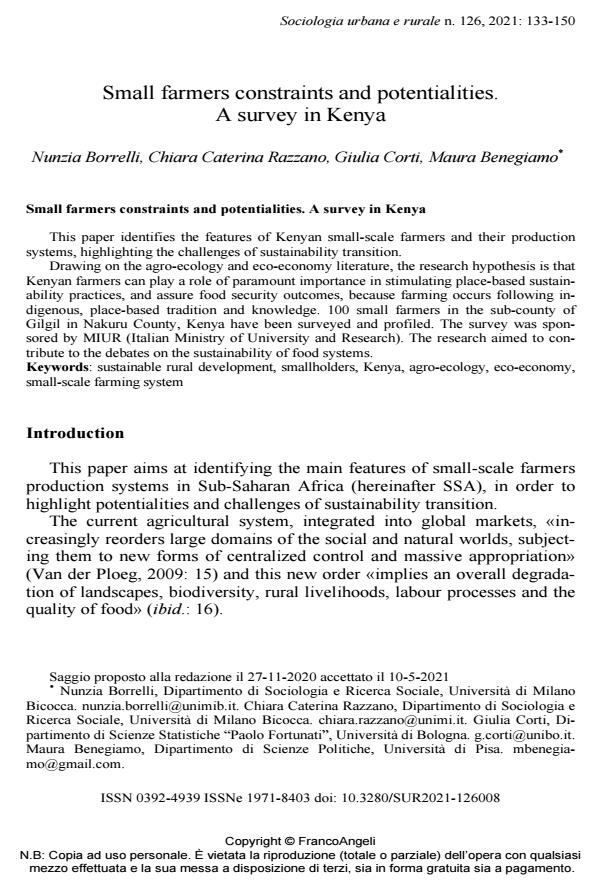Small farmers constraints and potentialities. A survey in Kenya
Journal title SOCIOLOGIA URBANA E RURALE
Author/s Nunzia Borrelli, Chiara Caterina Razzano, Giulia Corti, Maura Benegiamo
Publishing Year 2022 Issue 2021/126
Language English Pages 18 P. 133-150 File size 289 KB
DOI 10.3280/SUR2021-126008
DOI is like a bar code for intellectual property: to have more infomation
click here
Below, you can see the article first page
If you want to buy this article in PDF format, you can do it, following the instructions to buy download credits

FrancoAngeli is member of Publishers International Linking Association, Inc (PILA), a not-for-profit association which run the CrossRef service enabling links to and from online scholarly content.
This paper identifies the features of Kenyan small-scale farmers and their production systems, highlighting the challenges of sustainability transition. Drawing on the agro-ecology and eco-economy literature, the research hypothesis is that Kenyan farmers can play a role of paramount importance in stimulating place-based sustainability practices, and assure food security outcomes, because farming occurs following indigenous, place-based tradition and knowledge. 100 small farmers in the sub-county of Gilgil in Nakuru County, Kenya have been surveyed and profiled. The survey was sponsored by MIUR (Italian Ministry of University and Research). The research aimed to contribute to the debates on the sustainability of food systems.
Keywords: sustainable rural development, smallholders, Kenya, agro-ecology, eco-economy, small-scale farming system
Nunzia Borrelli, Chiara Caterina Razzano, Giulia Corti, Maura Benegiamo, Small farmers constraints and potentialities. A survey in Kenya in "SOCIOLOGIA URBANA E RURALE" 126/2021, pp 133-150, DOI: 10.3280/SUR2021-126008